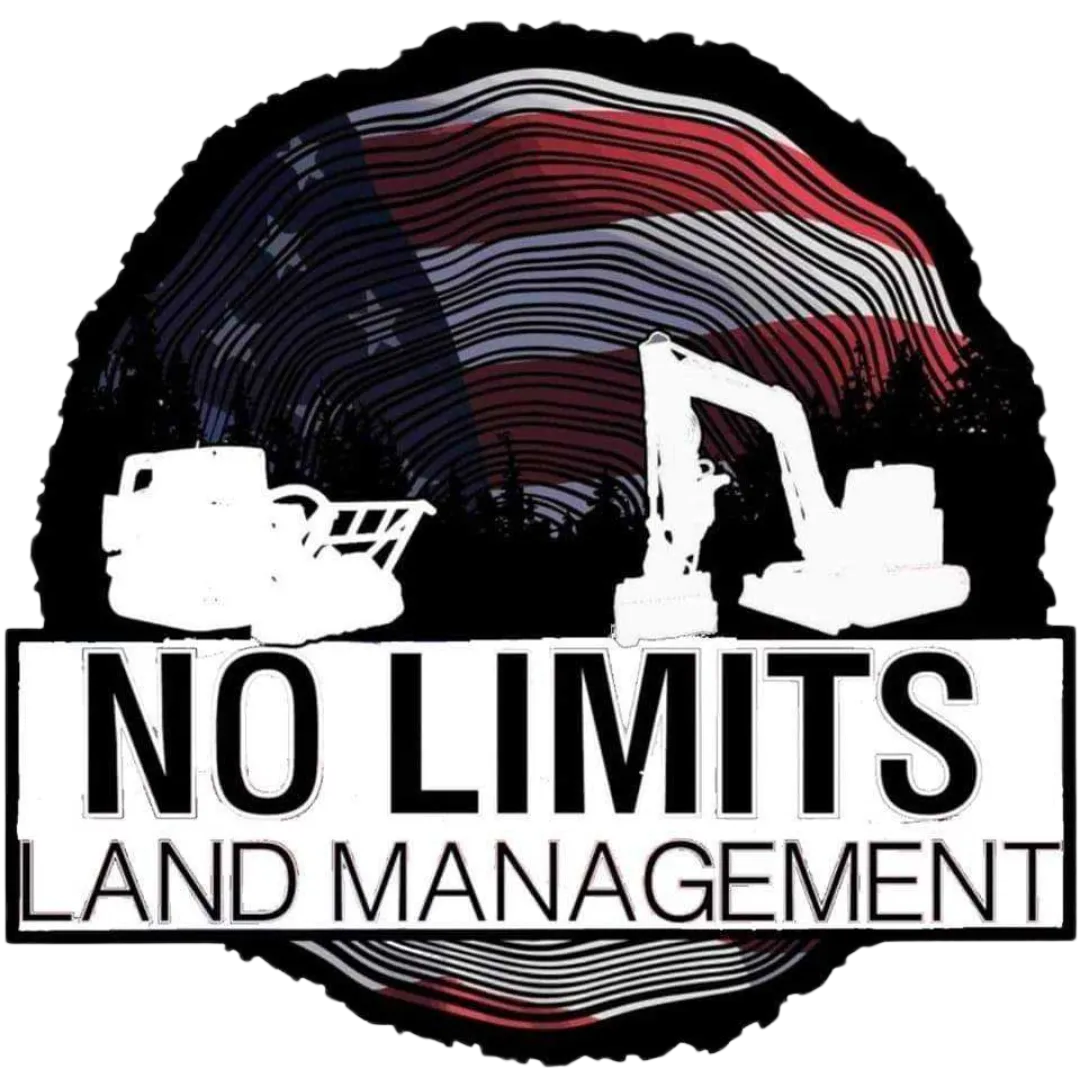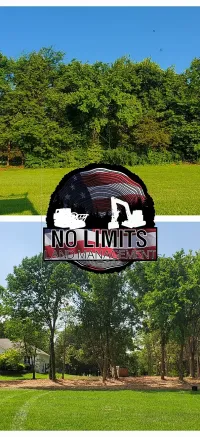News & Events

Demystifying Forestry Mulching: Frequently Asked Questions Answered
Demystifying Forestry Mulching: Frequently Asked Questions Answered
Forestry mulching is gaining popularity as a sustainable land management solution, but many questions still surround this innovative technique. To shed light on the subject, let's explore some frequently asked questions about forestry mulching and provide clear, concise answers.
1. What is forestry mulching?
Forestry mulching is a land clearing method that uses specialized machinery to grind trees, brush, and vegetation into mulch. Unlike traditional clearing methods that involve bulldozing or burning, mulching leaves behind nutrient-rich organic matter, promoting soil health and biodiversity.
2. How does forestry mulching benefit the environment?
Forestry mulching offers numerous environmental benefits. It promotes soil enrichment and nutrient recycling, reduces erosion, suppresses weed growth, and mitigates the risk of wildfires. By working in harmony with nature, mulching preserves habitats and supports wildlife.
3. What types of land can benefit from forestry mulching?
Forestry mulching is versatile and can be used in various types of land, including residential properties, commercial developments, agricultural land, utility corridors, and conservation areas. It is particularly useful in areas with dense vegetation or steep slopes where traditional clearing methods may be challenging or environmentally damaging.
4. How does forestry mulching compare to traditional clearing methods?
Compared to traditional methods like bulldozing or burning, forestry mulching offers several advantages. It is less disruptive to the environment, preserves soil integrity, and promotes biodiversity. Additionally, mulching creates organic mulch that enriches the soil, reducing the need for chemical fertilizers.
5. Is forestry mulching cost-effective?
Forestry Mulching offers long-term cost savings. By combining multiple steps into one efficient process – clearing, mulching, and soil enrichment – mulching reduces overall project costs and minimizes the need for ongoing maintenance.
6. What equipment is used for forestry mulching?
Forestry mulching is performed using specialized machinery called mulchers or forestry mulchers. These machines are equipped with rotary drum mulching heads that grind vegetation into mulch. They are designed to work in various terrains and can handle a wide range of vegetation types and sizes.
7. Is forestry mulching suitable for wildfire mitigation?
Yes, forestry mulching is an effective tool for wildfire mitigation. By creating defensible space, removing combustible material, and creating fire breaks, mulching helps reduce the risk of wildfires and protect properties and communities from their devastating effects.
Forestry mulching is a versatile, environmentally friendly land management solution that offers numerous benefits. By addressing common questions and misconceptions, we hope to provide clarity and encourage more people to consider mulching as a sustainable approach to land clearing and vegetation management.
Call No Limits Land Management today for your FREE estimate! 636.262.1970

Demystifying Forestry Mulching: Frequently Asked Questions Answered
Demystifying Forestry Mulching: Frequently Asked Questions Answered
Forestry mulching is gaining popularity as a sustainable land management solution, but many questions still surround this innovative technique. To shed light on the subject, let's explore some frequently asked questions about forestry mulching and provide clear, concise answers.
1. What is forestry mulching?
Forestry mulching is a land clearing method that uses specialized machinery to grind trees, brush, and vegetation into mulch. Unlike traditional clearing methods that involve bulldozing or burning, mulching leaves behind nutrient-rich organic matter, promoting soil health and biodiversity.
2. How does forestry mulching benefit the environment?
Forestry mulching offers numerous environmental benefits. It promotes soil enrichment and nutrient recycling, reduces erosion, suppresses weed growth, and mitigates the risk of wildfires. By working in harmony with nature, mulching preserves habitats and supports wildlife.
3. What types of land can benefit from forestry mulching?
Forestry mulching is versatile and can be used in various types of land, including residential properties, commercial developments, agricultural land, utility corridors, and conservation areas. It is particularly useful in areas with dense vegetation or steep slopes where traditional clearing methods may be challenging or environmentally damaging.
4. How does forestry mulching compare to traditional clearing methods?
Compared to traditional methods like bulldozing or burning, forestry mulching offers several advantages. It is less disruptive to the environment, preserves soil integrity, and promotes biodiversity. Additionally, mulching creates organic mulch that enriches the soil, reducing the need for chemical fertilizers.
5. Is forestry mulching cost-effective?
Forestry Mulching offers long-term cost savings. By combining multiple steps into one efficient process – clearing, mulching, and soil enrichment – mulching reduces overall project costs and minimizes the need for ongoing maintenance.
6. What equipment is used for forestry mulching?
Forestry mulching is performed using specialized machinery called mulchers or forestry mulchers. These machines are equipped with rotary drum mulching heads that grind vegetation into mulch. They are designed to work in various terrains and can handle a wide range of vegetation types and sizes.
7. Is forestry mulching suitable for wildfire mitigation?
Yes, forestry mulching is an effective tool for wildfire mitigation. By creating defensible space, removing combustible material, and creating fire breaks, mulching helps reduce the risk of wildfires and protect properties and communities from their devastating effects.
Forestry mulching is a versatile, environmentally friendly land management solution that offers numerous benefits. By addressing common questions and misconceptions, we hope to provide clarity and encourage more people to consider mulching as a sustainable approach to land clearing and vegetation management.
Call No Limits Land Management today for your FREE estimate! 636.262.1970

Demystifying Forestry Mulching: Frequently Asked Questions Answered
Demystifying Forestry Mulching: Frequently Asked Questions Answered
Forestry mulching is gaining popularity as a sustainable land management solution, but many questions still surround this innovative technique. To shed light on the subject, let's explore some frequently asked questions about forestry mulching and provide clear, concise answers.
1. What is forestry mulching?
Forestry mulching is a land clearing method that uses specialized machinery to grind trees, brush, and vegetation into mulch. Unlike traditional clearing methods that involve bulldozing or burning, mulching leaves behind nutrient-rich organic matter, promoting soil health and biodiversity.
2. How does forestry mulching benefit the environment?
Forestry mulching offers numerous environmental benefits. It promotes soil enrichment and nutrient recycling, reduces erosion, suppresses weed growth, and mitigates the risk of wildfires. By working in harmony with nature, mulching preserves habitats and supports wildlife.
3. What types of land can benefit from forestry mulching?
Forestry mulching is versatile and can be used in various types of land, including residential properties, commercial developments, agricultural land, utility corridors, and conservation areas. It is particularly useful in areas with dense vegetation or steep slopes where traditional clearing methods may be challenging or environmentally damaging.
4. How does forestry mulching compare to traditional clearing methods?
Compared to traditional methods like bulldozing or burning, forestry mulching offers several advantages. It is less disruptive to the environment, preserves soil integrity, and promotes biodiversity. Additionally, mulching creates organic mulch that enriches the soil, reducing the need for chemical fertilizers.
5. Is forestry mulching cost-effective?
Forestry Mulching offers long-term cost savings. By combining multiple steps into one efficient process – clearing, mulching, and soil enrichment – mulching reduces overall project costs and minimizes the need for ongoing maintenance.
6. What equipment is used for forestry mulching?
Forestry mulching is performed using specialized machinery called mulchers or forestry mulchers. These machines are equipped with rotary drum mulching heads that grind vegetation into mulch. They are designed to work in various terrains and can handle a wide range of vegetation types and sizes.
7. Is forestry mulching suitable for wildfire mitigation?
Yes, forestry mulching is an effective tool for wildfire mitigation. By creating defensible space, removing combustible material, and creating fire breaks, mulching helps reduce the risk of wildfires and protect properties and communities from their devastating effects.
Forestry mulching is a versatile, environmentally friendly land management solution that offers numerous benefits. By addressing common questions and misconceptions, we hope to provide clarity and encourage more people to consider mulching as a sustainable approach to land clearing and vegetation management.
Call No Limits Land Management today for your FREE estimate! 636.262.1970
QUESTIONS & ANSWERS:
WHAT AREAS / STATES DO YOU SERVE?
Although we are based in Missouri, No Limits Land Management offers services to Missouri, Iowa, and Illinois residents and businesses. Give us a call at (636) 262-1970 to learn more and schedule your FREE estimate.
WHAT SERVICES DO YOU OFFER TO BUSINESSES AND RESIDENTS?
We currently offer the following services:
Forestry Mulching
Lake/Pond Dam Maintenance
Road/Field Encroachment
Right of Way Clearing
Brush Pile Clearing
Field Reclamation
Demolition and Debris Clearing
For photo examples and full details for each service, visit our SERVICES page here!
HOW DO I GET AN ESTIMATE FOR SERVICES?
For a FREE estimate call or text (636) 262-1970 or click the contact us button below to get in touch with a professional team member who will help schedule your FREE estimate.
Get In Touch
Fill out the form below and a team member will reach out to you personally.
I agree that by providing my email and phone number, I agree to receive emails and text notifications from No Limits Land Management.


